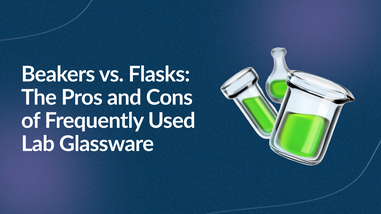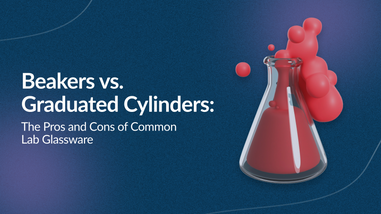- No products in the cart.
Reliability is a unifying feature of all good science. Reliable science ensures accuracy, reproducibility, and consistency across different conditions. At the most basic level, your science is only as good as the tools you use. Your measuring instruments are the key to creating the highest quality products, analyses, or results. Therefore, keeping your measuring instruments in good condition is crucial. Measuring instruments should be cleaned, maintained, and regularly calibrated.
When calibration goes unchecked for long periods of time, you can burden yourself with hidden costs from inaccurate or unreliable readings. Here, we outline some useful calibration procedures for measuring instruments to keep your lab and the instruments in it functioning at their best.

Identify measuring instruments that should be calibrated
A measuring instrument is any tool that weighs, counts, or measures quantitative characteristics of a sample. This can range from balances and scales to pipettors or pH meters. These tools must be regularly assessed with calibration to make sure they’re measuring accurately. How do you know if your measuring tool should be calibrated?
-
Check the recommendations from the manufacturer. Most manufacturers recommend regular calibration either by a trained user or by their own technical assistance professionals.
-
Always calibrate measuring instruments after any kind of mechanical shock or damage. Make sure such shocks are reported promptly, even if there is no visible evidence of damage, so you can identify any inaccuracies before they become a problem. Calibration will help identify when a repair is needed.
-
Set a regular, periodical calibration schedule for all of your instruments to keep them functioning at their best.
Decide how to calibrate your instruments
As mentioned above, a trained user in your lab can calibrate some measuring instruments, while others require a visit from the manufacturer’s technical assistance professionals. Read manuals and manufacturer recommendations and decide on the right calibration procedures for each measuring instrument in your lab.
If you choose to calibrate in-house, be sure that you have the right standards for an accurate calibration. Often times, the standard used to calibrate should be 3- to 10-fold more accurate than instrument being tested. For example, balances will need standardized weights and pH meters need standardized buffer solutions. If you have any questions about calibration procedures, always refer to the manual rather than troubleshooting on your own.
Understand the importance of ‘traceability’
Traceability is the most important goal of measurements in a lab. Traceability of measurements is about being able to translate results across equipment, people, and areas. It means being able to repeat a measurement of the same sample in different labs using different equipment and getting the same result. Traceability of your measurements can be ensured in your lab through with these three considerations:
-
Have a clear and appropriate procedure for how the unit is measured. This procedure should be recognized and conform to industry standards.
-
Employ a well-trained staff that use and understand the instrument. They should appreciate the importance of accuracy to produce quality results. In particular, if your staff will be the ones performing in-house calibrations, their ability to interpret results is critical.
-
Use calibrated instruments. The accuracy of all measuring instruments degrade over time. This is can be caused by a number of factors including hazardous manufacturing environment and everyday wear and tear. The bottom line is that, calibration greatly improves the accuracy of the measuring instrument.
Generation of traceable measurements ensures that the output of your lab is in line with industry standards.
Understand what calibration can do for you
A calibrated instrument will not only help you produce high quality, reliable, traceable results, but will also save you money. Regular calibration can identify when an instrument is in need of adjustment or repair.
There are many hidden costs associated instruments that are un-calibrated or poorly calibrated. An un-calibrated instrument can continue giving quantitative readouts for months, or longer, that are inaccurate. If you run an analytical lab, for example, that could translate to inaccurate results for
thousands of clients.
This could theoretically cost you time and effort for re-runs, as well as the clients’ trust if they see inconsistencies in your data. This whole hassle can be avoided with relatively quick and affordable maintenance calibrations of your instruments.
In Summary
Calibration is absolutely critical for any lab that relies on accurate measurements. It is important to be familiar with calibration procedures for measuring instruments, as well as how proper calibration will benefit your lab. Moreover, it can save you the hassle of having to re-analyze measurements taken on a faulty instrument by identifying problems early on. Always know your instruments’ requirements and, above all, use a trusted supplier to provide you with quality instruments and technical expertise.
For over 40 years, Lab Pro has been committed to delivering a complete laboratory solution by offering the highest quality calibration and measuring instruments, chemicals, reagents, microscopes and imaging equipment for our customers worldwide. Come visit the biggest Lab Supply showroom in the Bay Area, or contact us online or at 888-452-2776.












































